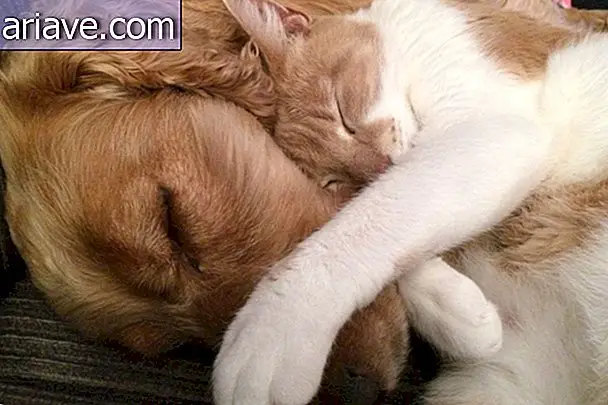Next Stop: Japan - Understand the Rises of the Rising Sun Land
With its millennial customs and exotic traditions, Japan is a land whose habits cause both shock and dazzle to our western minds. The same country as geishas, samurai, and ninjas has also given rise to some of the weirdest TV commercials of all time and some simply bizarre young crazes.
The fact is that, even with their small size, the islands that make up the Land of the Rising Sun retain a rich culture that in one way or another influences every corner of the world. In Brazil, the presence of Japanese habits spread subtly, being more visible in places like the Liberdade District in São Paulo. Today, the Brazilian territory is home to the second largest Japanese community in the world, second only to Japan itself.
For the same reason, the eastern country is home to hundreds of thousands of Brazilians, which only increases our interest in these lands. Let us then embark on a journey to learn more about the history, life and culture of the interesting Japanese world. Obviously, it is impossible to talk about all the curious aspects of this rich people, but here are some of the elements that allow us to understand a little more about their habits.

History: From the bottom to the top of the world
Japan has in its history an example of how it is possible to take a drastic turnaround in a country's situation. To get an idea, just take into account that the Land of the Rising Sun has shifted much of its closed history to trade with the rest of the world and a kind of feudal government, the shogunate (also spelled shogunate).
It was only after the commercial opening of the Japanese ports in 1854 and the reestablishment of the emperor's centralized power in 1868 that the country began a period of economic and military development that also led to expansionary practices that put it in conflict with many countries. especially China and Russia (or the Soviet Union).
Following the nuclear bombing of Hiroshima and Nagasaki and the end of World War II in 1945, Japan began the creation of a pacifist constitution that emphasized liberal democratic practices. Since then, the Land of the Rising Sun has undergone periods of recovery and reassurance, with widespread growth that has made it today the world's third largest economy and one of the most technologically advanced countries.

Fight against nature
The Japanese territory consists of more than 6, 800 distinct islands, the main ones being Hokkaido, Honshu (where the national capital is, Tokyo), Shikoku and Kyushu. With a population of over 127 million people spread over an area of about 377, 000 square kilometers, Japan is the 30th most densely populated nation in the world, with about 337 people per square kilometer.
The climate in the Land of the Rising Sun presents a strong difference between the four seasons due to the influences of the cold air masses coming from Siberia in winter and the warm air coming from the Pacific in summer. Typhoons are common between August and September. In addition to variations throughout the year, the Japanese regions also have temperature variations, with the North being the coldest area, the Center still a little cold and the South having milder weather.
With over 70% of its territory covered by forests and mountainous terrain, the coastal plains are the most populated areas of the country. The fact that the archipelago is located in the Pacific Circle of Fire makes it more than 200 volcanoes, 80 of which are still considered active - including the famous Mount Fuji. In addition, the positioning of the Japanese territory makes it prone to earthquakes, averaging 1, 500 aftershocks per year.

Ancestral Posture
Despite all the climatic and territorial difficulties, Japan has established itself as a prosperous country, with one of the highest life expectancies and a large elderly population - reaching the impressive total of over 50, 000 people over 100 years of age. Still, the Japanese are among the people with the highest suicide rates in the world, being the leading cause of death for Japanese men between the ages of 20 and 44.
Famous for their strict rules of etiquette, the Japanese have a habit of introducing themselves first by their last name and then by their first name, and it is common to refer to someone by their last name until intimacy is gained. In addition, respectful suffixes such as "san", "kun" and "sama" are often added when referring to someone else. Using a person's first name, especially if the suffix is omitted, is reserved for close friends and family.
When entering a Japanese's house, it is common to find an elevation of about 15 cm on the floor, which indicates the need to change your shoes for shoes more suitable for use indoors. When there is a mat, an additional elevation of up to 5 cm indicates where you need to be without any shoes. A curious thing about such a modest culture is that making noise when eating noodles is considered a compliment to cooks.

Talking about goodies
Food in Japan has changed a lot over the last few centuries because of the many political and social changes we talked about above. Traditional Japanese cuisine has major influences from Korean and Chinese cultures, but it has also received some aspects from Indian and most Western countries.
A typical Sun Land breakfast includes steamed rice, miso soup, green tea and a variety of additional dishes, which may include a rice porridge called nanakusa-gayu, rolled omelets known as tamagoyaki and the famous tofu. In addition, it is also possible to start your Japanese day by eating eggs, ham, grilled eel, pickles, salad, dried seaweed and natto, as it is called fermented soy.
Lunches usually consist of bowls of various types of noodles or rice, known as donburi, accompanied by fish, meat or vegetables. Already at dinner, the variety of foods available is simply huge, with pork dumplings called nikuman and fried foods and grills of meat, poultry and fish of all kinds, with exotic names like teppanyaki, tonkatsu and yakitori. Of course, famous items like sushi, tempura and fried rice are not left out.

Parties, stars and peladões
Japanese culture goes far beyond manners and food, obviously. Throughout the year, the country is dotted with a series of distinct festivals and celebrations, some of which are even reproduced by the Japanese communities here in Brazil. An example of one of the biggest parties in Japan played by these bands is Tanabata Matsuri (the “Festival of the Stars”), which is always held in the vicinity of July 7th.
The Tanabata originates from a Japanese legend in which a princess named Orihime, daughter of a powerful god, fell in love with a commoner. The father allowed their union, but noting that they did not fulfill their obligations condemned them to be on either side of the Milky Way. Lovers can only meet on the seventh day of the seventh month, but only by fulfilling the wishes made by humans. Therefore, it is customary at the time of the party to write an order on a colored card and attach it to a tall bamboo.
There are, however, celebrations in Japan that do not win their reproduction in our country and therefore end up sounding rather weird to us. This is the case of Hadaka Matsuri, which brings together thousands of men dressed only in a fabric called bottomshi, which covers their private parts. The idea is to collect sacred items from temples and shrines to attract good luck.

Curiosities and oddities
- In Japan, there are only two homicides involving firearms per year;
- The world's most enduring company, temple builder Kongo Gumi, has operated in Rising Sun Land from 578 until 2006;
- Japanese trains are among the most punctual on the globe, with an average delay of just 18 seconds;
- Square watermelons are grown by farmers in Japan because they are easier to stack and store;
- The country has more pets than children;
- The birth rate there is so low that geriatric diapers sell more than babies' diapers;
- 98% of all adoptions in Japan are from adult men, who enter a family so that business can continue from parent to child;
- The Japanese who survived the sinking of the Titanic was called a coward within his country for not dying with the other passengers;
- In the Land of the Rising Sun, 90% of cell phones are waterproof because young people even use them in the shower;
- In both Korea and Japan there are cafes where you can pay to play with kittens while having your drink;
- There are more than 5.5 million vending machines on Japanese soil, ranging from drinks like cold tea, hot coffee and beer to items like underwear;
- Sleeping during office hours is acceptable, as it is seen by bosses as a sign that the employee is working hard;
- There are employees on the Japanese subway, called oshiya, who are tasked with making people fit inside the trains - even at the base of the push;
- During World War II, Japan bombed China with bubonic plague-infected fleas;
- In Japanese schools, teachers and students come together to clean classrooms and the cafeteria;
- The total of Chinese killed by Japanese soldiers during World War II was higher than the Jews executed by the Germans in the Holocaust;
- Raw horse meat is a popular dish in Japan, thinly sliced and called basashi.
So, did you like to know a little more about this very different land? Ready for your trip to the other side of the world? Leave more information about Japan in the comments and help show the peculiarities of this rich culture. See you at the next stop!











